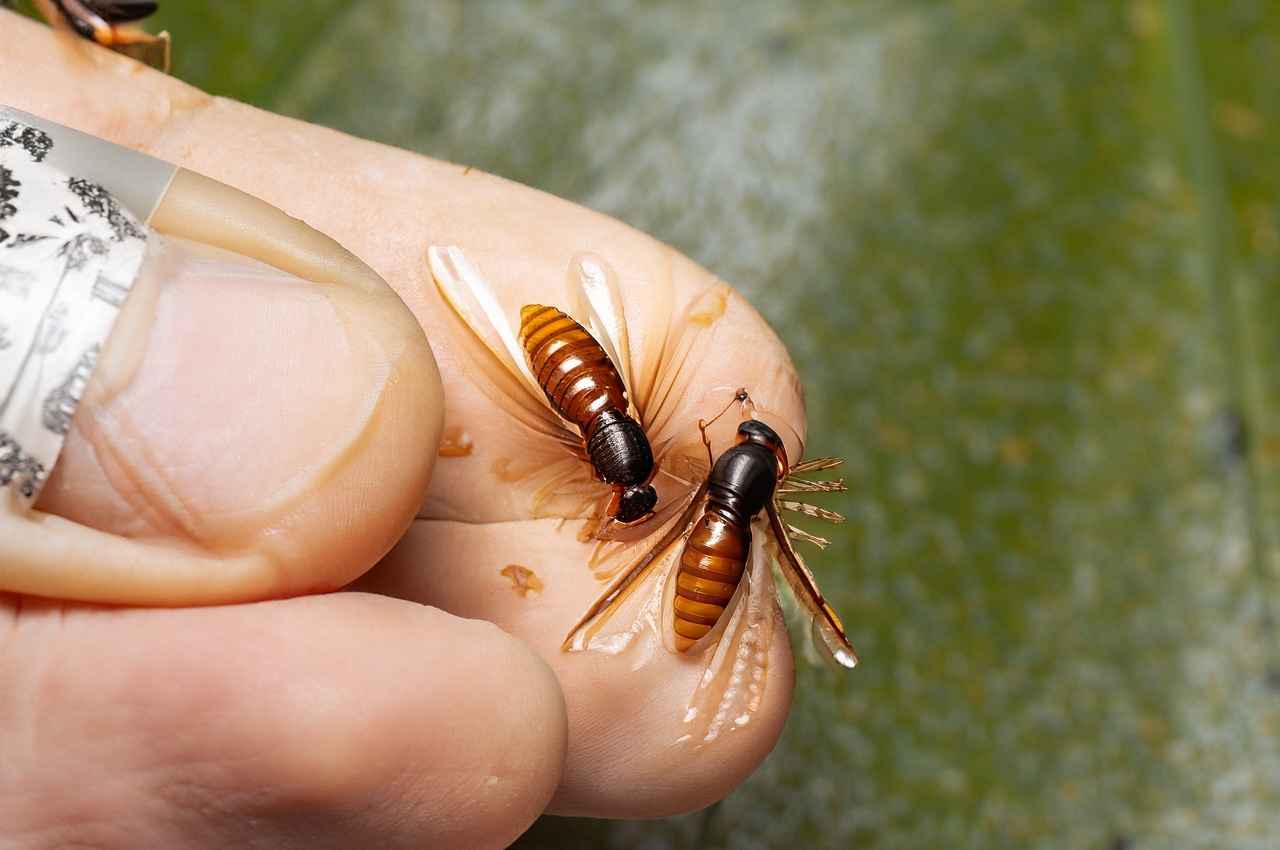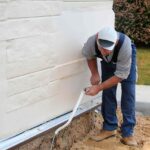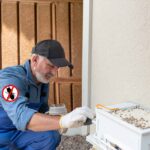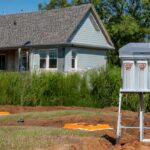Exploring Strategies: How Do You Kill Flying Termites Successfully? Seeing flying termites emerging en masse from your property is worrying, as it may indicate a larger termite colony nearby that could damage your home. These swarming flying termites, known as “swarmers,” leave the nest when mature to find new sites to establish colonies. This flying termite problem requires prompt action to stop the infestation before it spreads. This article outlines practical control techniques homeowners can use to protect their property and peace of mind.
How do you kill flying termites?
Flying termites can be eliminated through several effective methods:
Vacuuming – A simple vacuum cleaner instantly sucks up flying termites in your home. Be sure to empty the bag immediately outdoors so trapped termites don’t escape.
Pesticide Sprays – Insecticide sprays formulated to kill termites will destroy flying termites on contact, provided you carefully follow all label instructions.
Bait Stations – Slow-acting bait placed in stations tempts termites, who carry the toxins back to the colony so they progressively kill off the nest.
Professional Pest Control – For substantial infestations, your best option is calling a pest control company. Professionals have the expertise and tools to fully eliminate termites and prevent future invasions.
Safety recommendations for killing flying termites
| Precaution | Description |
|---|---|
| Wear Protective Gear | Long sleeves, gloves, mask |
| Follow Pesticide Instructions | Use pesticides carefully |
| Avoid Breathing Dust or Fumes | Prevent inhalation of harmful particles |
| Consult Pest Control Professional | Seek expert advice for safe and effective methods |
Preventive Measures to Reduce Flying Termite Infestations
| Preventive Action | Description |
|---|---|
| Regular Inspections | Regularly inspect your property for signs of termites and take action promptly |
| Moisture Control | Fix leaks, improve drainage, reduce humidity |
| Wood Maintenance | Seal cracks in wood, remove dead trees or stumps |
| Termite-Resistant Materials | Use termite-resistant building materials |
| Professional Inspections | Schedule regular pest control inspections |
By following these safety tips, you can help to protect yourself and your family from harm when killing flying termites.
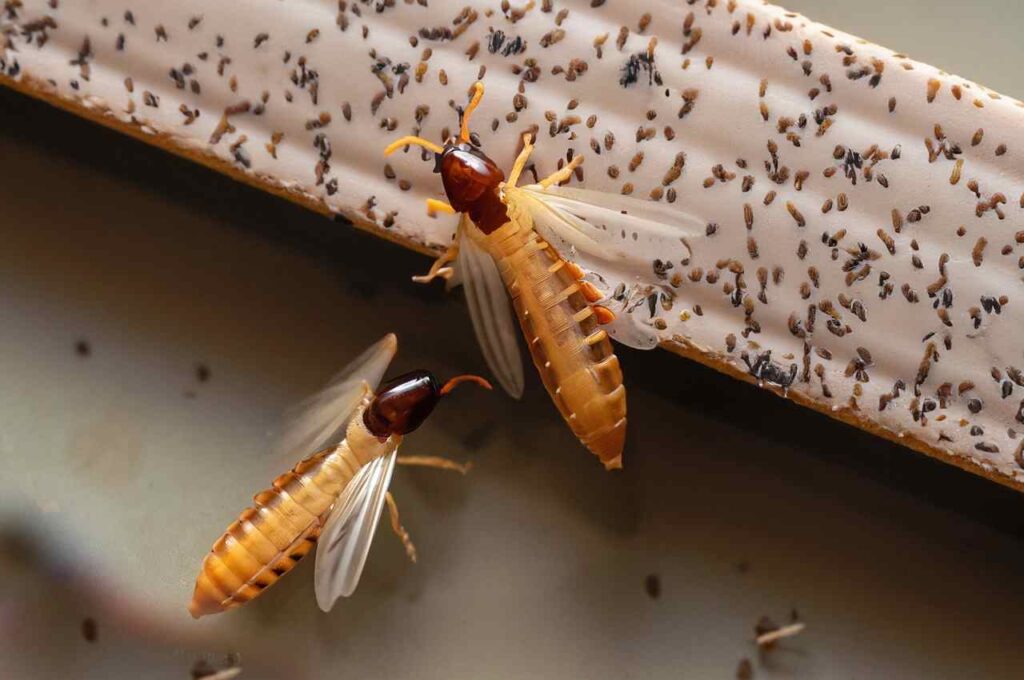
Professional Methods of killing flying termites
| Method | Description | Effectiveness | Safety |
|---|---|---|---|
| Sticky traps | Traps termites when they land on them. | Effective for mild infestations. | Safe for humans and pets. |
| Bait stations | Methods of killing flying termites | Effective for moderate to severe infestations. | Safe for humans and pets, but can be harmful to wildlife. |
| Chemical treatment | Uses pesticides to kill termites. | Effective for all infestation levels. | Can be harmful to humans and pets, and can pollute the environment. |
| Heat treatment | Heats the infested area to a high temperature, killing the termites. | Effective for all infestation levels. | Safe for humans and pets, but can be expensive. |
| Fumigation | Fills the infested area with a poisonous gas, killing the termites. | Effective for all infestation levels. | Very dangerous to humans and pets, and can pollute the environment. |
Factors Influencing Treatment Choice
| Factor | Mild Infestation | Severe Infestation |
|---|---|---|
| Treatment Efficacy | Lower | Higher |
| Duration of Treatment | Shorter | Longer |
| Complexity of Application | Simpler | More involved |
| Cost | Lower | Higher |
Common Types of Flying Termites and Their Characteristics
| Termite Species | Characteristics | Habitat |
|---|---|---|
| Subterranean Termites | Smaller, softer bodies, live underground, build mud tubes | Soil, wood, moist environments |
| Drywood Termites | Larger, harder bodies, live in wood, create fecal pellets | Dry, seasoned wood structures |
| Dampwood Termites | Larger, softer bodies, live in damp wood, minimal contact with soil | Damp and decaying wood |
Comparison of Natural Remedies and Chemical Treatments
| Treatment Method | Natural Remedies | Chemical Treatments |
|---|---|---|
| Effectiveness | Variable effectiveness, may require repeated applications | High effectiveness, rapid action |
| Environmental Impact | Generally eco-friendly | May have environmental impact |
| Duration of Action | May require regular maintenance | Long-lasting protection |
What’s the best way to get rid of flying termites in my home?
The most effective DIY method is sticky traps near doors and windows to catch termites. You can also use bait stations – the poison bait will attract and slowly kill them over time. Avoid using chemicals if possible, as these can be hazardous. Calling a professional exterminator is the safest approach for serious infestations.
Are there any homemade tricks I can try to stop flying termites invading my property?
You can try vacuuming them up, just remember to empty the bag outside so they don’t escape. Carefully follow all instructions if using commercial pesticide sprays. Bait stations will let termites take poison back to the nest. Boric acid, diatomaceous earth and vinegar work as natural insecticides. Always take safety precautions and keep children and pets away from treated areas.
What insecticides work well against flying termites?
There are several effective options, including bifenthrin, a contact insecticide available in sprays, dusts and baits. Other chemical choices are cyfluthrin sprays for fast knockdown and fipronil, which comes in long-lasting sprays, baits and granules. Permethrin is another synthetic pyrethroid insecticide that works well in sprays, dusts and foggers. Be vigilant as effectiveness varies by termite species.
Can I use natural solutions to get rid of flying termites?
Yes, there are some eco-friendly remedies. Try applying boric acid powder around the property as an insecticide. Diatomaceous earth can shred their exoskeletons. You can mix vinegar with water to spray areas. Orange oil or garlic oil work as natural repellents too. However, for severe infestations, chemical pesticides may work better.
How does treating flying termites differ from treating ground termites?
Treatments vary significantly. Flying termites are only active briefly, so treatments target windows, doors and other entry points. Baits and heat are more effective on flying termites than liquid chemicals. You need to keep treating until the termite queen is killed, as swarmers will keep emerging from the colony.
When are flying termites most active during the year?
In the US, flying termites are most prevalent from April through September, the warm humid seasons they prefer. Exact swarming times depend on local climate and weather. Monitor your property closely during spring and summer to catch any infestations before they spread.
How can I tell if I need to treat a flying termite problem urgently?
Signs like seeing swarmers, mud tubes, termite droppings and wood damage indicate an infestation. Minor activity may just need monitoring, but large swarms, extensive tunnels or severe damage require prompt action before the termites spread further. Don’t delay – get help as soon as possible.
Should I worry about flying termites damaging my home’s structure?
Yes, flying termites can certainly damage your home’s structure, so concerns are justified. Get regular professional inspections to catch issues early. Maintain your property well, fix moisture problems quickly, choose termite-resistant plants and use repellents to help prevent infestations. Any activity needs immediate attention to stop additional destruction.
What attracts flying termites to my home, and how do I get rid of these attractants?
Flying termites seek moisture, wood, warmth and light. Fix any soggy soil issues, leaking pipes or poor drainage. They also love untreated timber, wooden decks and fences. Reduce outdoor lighting during swarming season, as light attracts them. Maintain proper ventilation and temperature control indoors, as termites prefer warmer conditions. Eliminate attractants by using termite-resistant building materials, treating wood, and addressing any moisture issues.
Are there any natural predators that can help control flying termites?
Yes, certain animals like ants, beetles, spiders, birds and wasps all prey on termites. Ants are attracted to their smell. Various beetles and birds eat the termites, while mud dauber wasps paralyze them to feed their young. Natural predators help reduce termite numbers but may not completely eliminate an infestation. Call a pest control expert if you spot termite activity.
Could I mistake flying termites for other insects? How do I correctly identify them?
Flying termites are sometimes confused with flying ants or wasps. Look closely at body shape, wings and antennae to discern differences. Flying termites have straight lined bodies, while ants and wasps have pinched waists. Termites have smaller front wings. Their antennae are long and thin. Ants and wasps have shorter, elbowed antennae. Color can also indicate species – termites are light brown but ants and wasps are often brighter.
Which parts of my property are most prone to flying termite infestations?
They often infest foundations, walls and other sunlit areas near the ground. Anywhere warm and damp like under decks or crawlspaces appeals to them. They love attacking wood, so exterior facades, furniture and firewood are also prime targets. Existing trails of pheromones left by past termites may lure new ones to afflicted areas. Monitor vulnerable spaces vigilantly.
If I see flying termites, does that mean there’s a termite colony on my property?
Yes, swarming flying termites indicate a nearby colony is maturing and ready to spread out and form new colonies. Their emergence means the colony has grown substantially. If you notice flying termites around your home, there are likely active termite nests nearby. The swarmers leave in spring and summer when conditions are warm and humid to find mates.
What safety precautions should I take when trying to eliminate flying termites myself?
Wear long sleeves, pants, gloves and a mask for protection from bites and irritation. Carefully follow all label directions when using pesticide sprays or dusts. Avoid breathing in dust or fumes when cleaning up deceased termites. Consider hiring a professional exterminator for safe, effective elimination if DIY methods concern you.
Can traps and baits effectively capture and kill flying termites?
Yes, both traps and baits can successfully eliminate flying termites. Sticky adhesive traps readily catch flying termites once they land. Bait stations use poisoned bait to kill termites over an extended period as they return and spread the toxins within the colony. More extreme infestations may require fumigation. Choose the method based on specific termite type and degree of infestation.
How do proper ventilation and moisture control help prevent flying termite invasions?
Proper ventilation keeps air dry, as termites need moisture. Fix any cracks in foundations or walls, clear rain gutters and use dehumidifiers in damp areas. Avoid over-fertilizing and harsh chemicals. Plant trees away from your home to provide shade and deter termites. Good moisture control keeps your home an unappealing environment for termites.
What are some good long-term solutions beyond immediate treatment to stop flying termites coming back?
After initial extermination, maintain termite bait stations to continually kill them off. Use termite-resistant building materials as physical barriers. Get regular pest control inspections to spot early warning signs of new activity. Fumigation and heat treatments provide lasting protection. Compare available long-term preventative options based on your specific needs and budget.
How does the flying termite elimination process differ based on the size of the infestation?
For minor infestations, sticky traps, bait stations and repellent oils may suffice. More significant invasions require bringing in a professional exterminator. They can determine whether to use chemicals, heat or fumigation depending on how widespread the termites are. Consult an expert to identify the appropriate response based on the details of your unique situation.
What precautions should I take to safely get rid of flying termites?
Wear protective clothing like long sleeves, pants, gloves and a mask. Follow all directions carefully when using pesticide sprays or dusts. Avoid breathing in particles or fumes when cleaning up after treatment. Consider hiring a professional if DIY elimination seems risky. Take sensible precautions to ensure your safety.
Can traps and baits be effective against flying termites?
Yes, traps and baits can both successfully capture and kill flying termites. Sticky adhesive traps readily catch flying termites when they land near entry points. Bait stations tempt termites with poisoned bait that kills them over time as they ingest it and spread it within the colony. The best method depends on the specific termite species and the extent of your infestation.
Conclusion
In summary, the best flying termite remedy depends on the severity of your unique situation. Minor activity may be managed with traps and baits. However, large swarms or excessive property damage require stronger chemical, heat or fumigation treatments. Always take safety precautions during do-it-yourself pest control. If infestations seem beyond your abilities, don’t hesitate to hire a pest management professional to eradicate flying termites and protect your home.
- How do termite mounds help regulate temperature? - 7 January 2024
- 10 Effective Termite Control Methods That Actually Work - 4 January 2024
- How Long Does It Take for a Termite Mound to Form? - 21 December 2023
